In this blog post we take a look at the fundamental anatomy of the sacroiliac, or SI joint. The SI joint is the articulation between the ilium and the sacrum on each side of the pelvis. As with other joints, it is comprised of the bony stabilizers, the static soft tissue or ligamentous stabilizers, and the dynamic muscular stabilizers. On the surface of the bone is the articular cartilage.
The SI joint depends primarily on the stout ligaments that cross it for stability. The bones also have shallow interdigitations that correspond on each side, thus conferring some bony stability. Finally, there are the muscles (dynamic stability) and fascia—especially the thoracolumbar fascia.
Figure 1 illustrates the bones that comprise the SI joint.
Figure 2 illustrates the stout ligamentous stabilizers of the joint. These include:
Movement is very limited for this joint, but includes nutation or anterior tilt (flexion) of the sacrum between the ilia, counter-nutation or posterior tilt (extension) and small movements of the ilia themselves. The stable SI joint thus functions for shock absorption and transfer of torque during ambulation.
Muscles and fascia also confer stability to the joint. Figure 3 illustrates the relationship between the erector spinae muscles of the back and the muscles of the pelvic floor. You can see that the erector spinae muscles draw the sacrum into flexion (nutation) and the muscles of the pelvic floor (especially the pubococcygeus) draw the bone into extension (counter-nutation). Simultaneously engaging these muscles creates opposing forces that stabilize the joint.
Figure 4 illustrates the relationship of the latissimus dorsi and gluteus maximus muscles on opposite sides of the body. In between is the thoracolumbar fascia. Note how the fibers of these structures run perpendicular to the joint. Thus, working with core exercises such as Bird Dog Pose can help to strengthen the dynamic stabilizers of the SI joint. These muscles, along with the fascia comprise the “posterior oblique subsystem”.
Want to learn more about anatomy and biomechanics for your practice? Click here to check out the Yoga Mat Companion series! Below are some excerpts from these books.
Hope you enjoy this overview of the foundational structures of the SI joint. I’d also like to say to our friends in Florida that I'll be teaching in beautiful Tampa/St Pete on the weekend of September 23--25. This is a special intensive in which I will be presenting the most recent research on stretching biomechanics and physiology in a manner that you can apply to your actual practice. Not to be missed! This intensive is the only course I'll be teaching in the Southeast USA this year--hope to see you there! Click here for more information from Suncoast Yoga Teachers Association…
All the Best,
Ray Long, MD
The SI joint depends primarily on the stout ligaments that cross it for stability. The bones also have shallow interdigitations that correspond on each side, thus conferring some bony stability. Finally, there are the muscles (dynamic stability) and fascia—especially the thoracolumbar fascia.
Figure 1 illustrates the bones that comprise the SI joint.
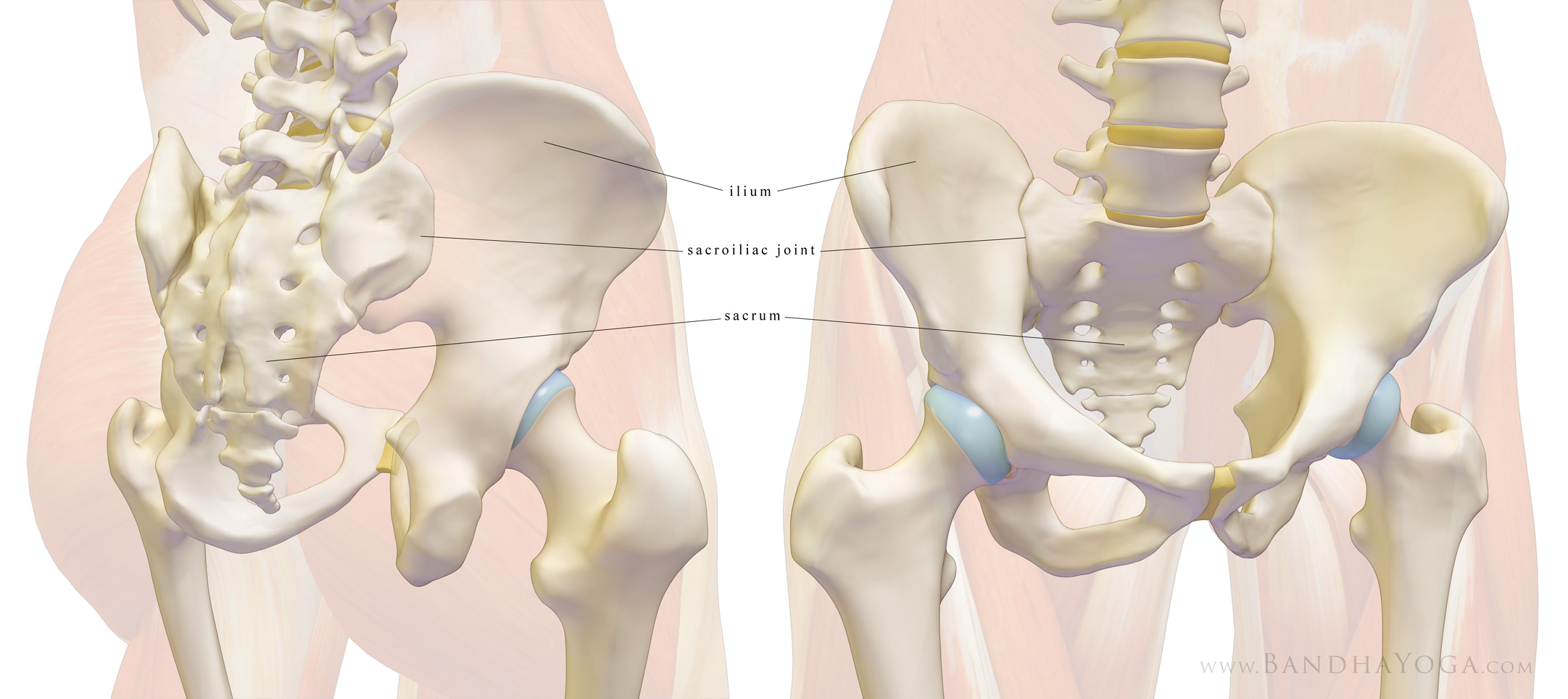 |
| Figure 1: The bones of the sacroiliac joint. |
Figure 2 illustrates the stout ligamentous stabilizers of the joint. These include:
- The anterior (front) and posterior (back) sacroiliac ligaments running from the sacrum to the ilium;
- The sacrotuberous ligaments running from the sacrum to the ischial tuberosity;
- The sacrospinous ligaments running from the sacrum to the posterior iliac spine;
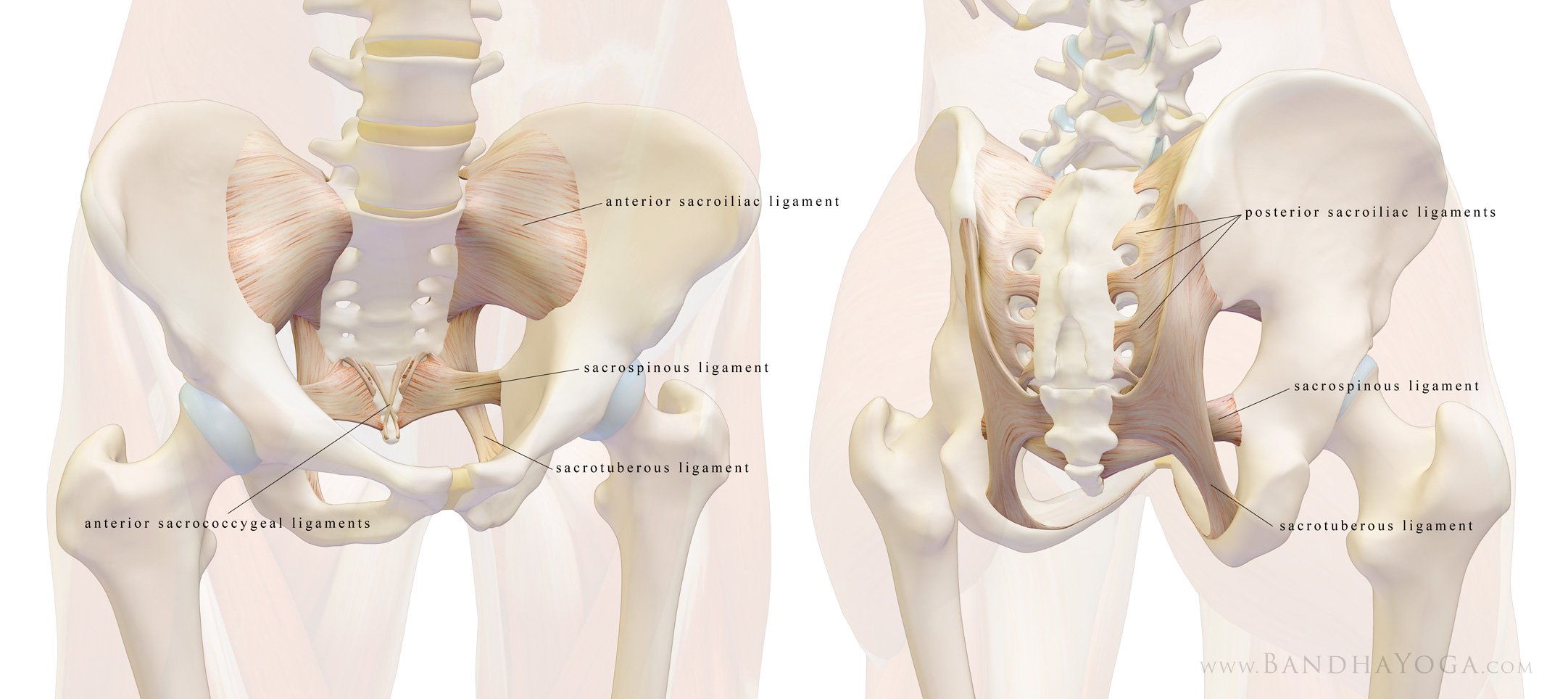 |
| Figure 2: The ligaments of the sacroiliac joint. |
Movement is very limited for this joint, but includes nutation or anterior tilt (flexion) of the sacrum between the ilia, counter-nutation or posterior tilt (extension) and small movements of the ilia themselves. The stable SI joint thus functions for shock absorption and transfer of torque during ambulation.
Muscles and fascia also confer stability to the joint. Figure 3 illustrates the relationship between the erector spinae muscles of the back and the muscles of the pelvic floor. You can see that the erector spinae muscles draw the sacrum into flexion (nutation) and the muscles of the pelvic floor (especially the pubococcygeus) draw the bone into extension (counter-nutation). Simultaneously engaging these muscles creates opposing forces that stabilize the joint.
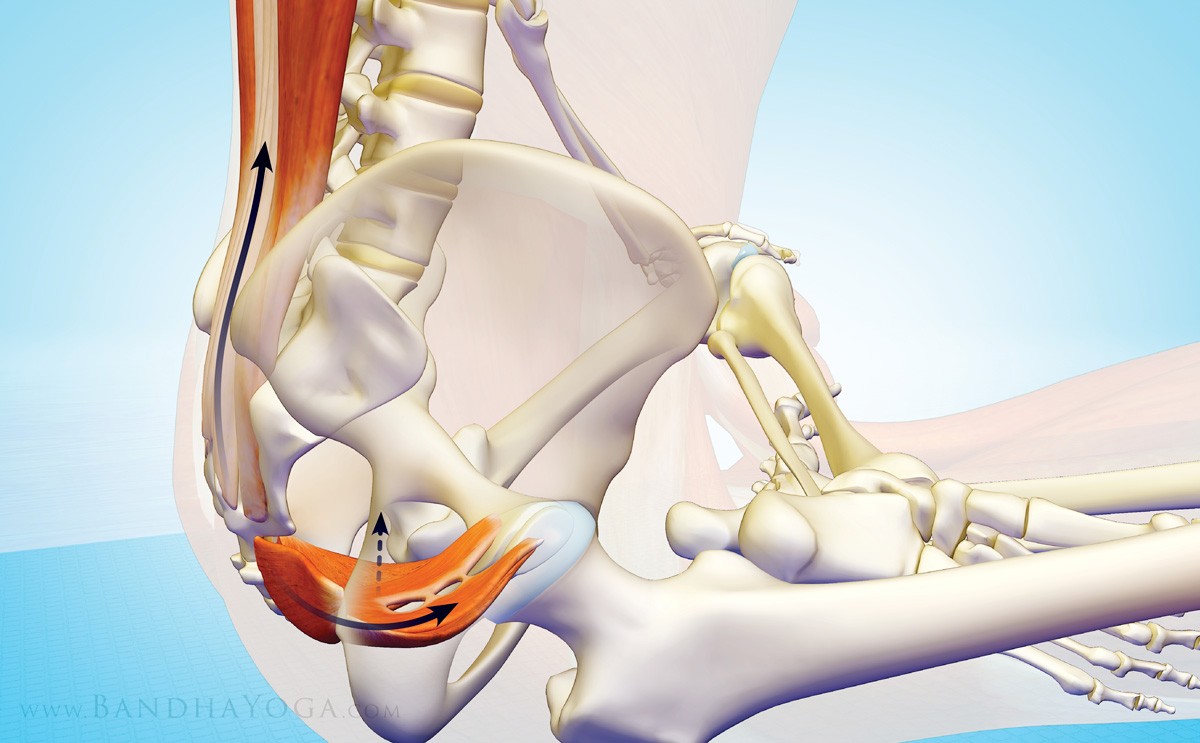 |
| Figure 3: The interaction between the erector spinae and pelvic floor muscles for stabilizing the SI joint. |
Figure 4 illustrates the relationship of the latissimus dorsi and gluteus maximus muscles on opposite sides of the body. In between is the thoracolumbar fascia. Note how the fibers of these structures run perpendicular to the joint. Thus, working with core exercises such as Bird Dog Pose can help to strengthen the dynamic stabilizers of the SI joint. These muscles, along with the fascia comprise the “posterior oblique subsystem”.
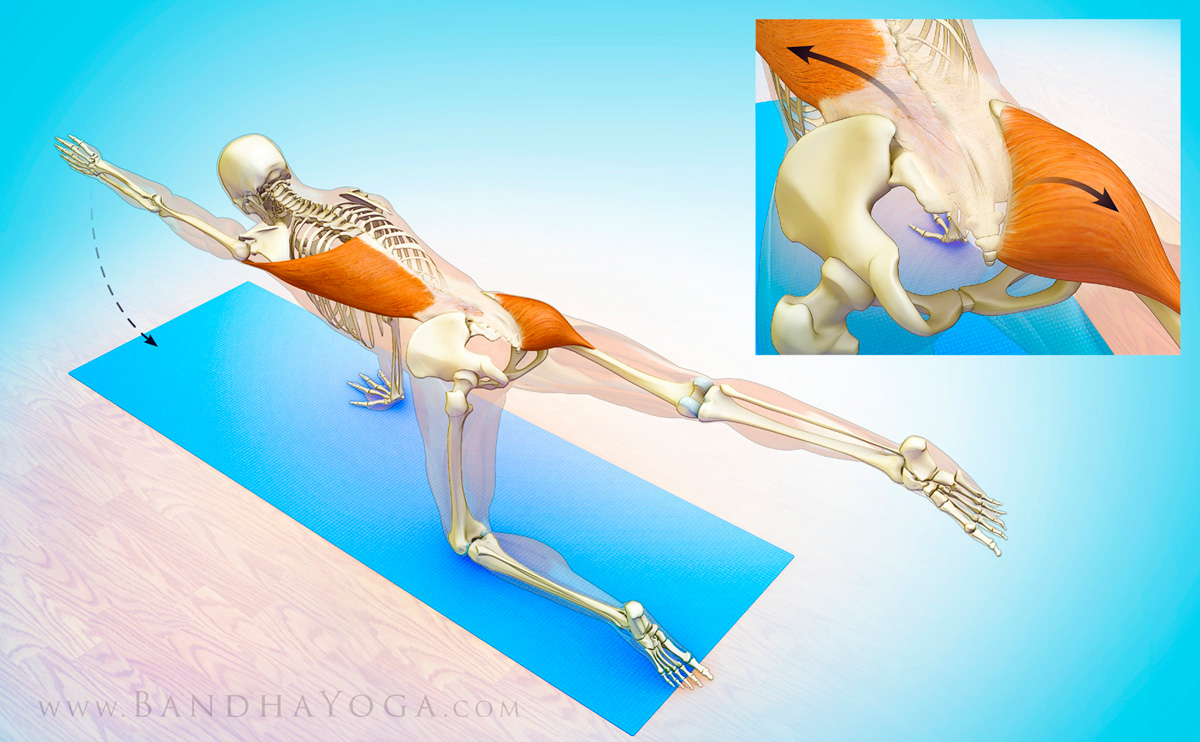 |
| Figure 4: The posterior oblique subsystem for stabilizing the SI joint. |
Want to learn more about anatomy and biomechanics for your practice? Click here to check out the Yoga Mat Companion series! Below are some excerpts from these books.
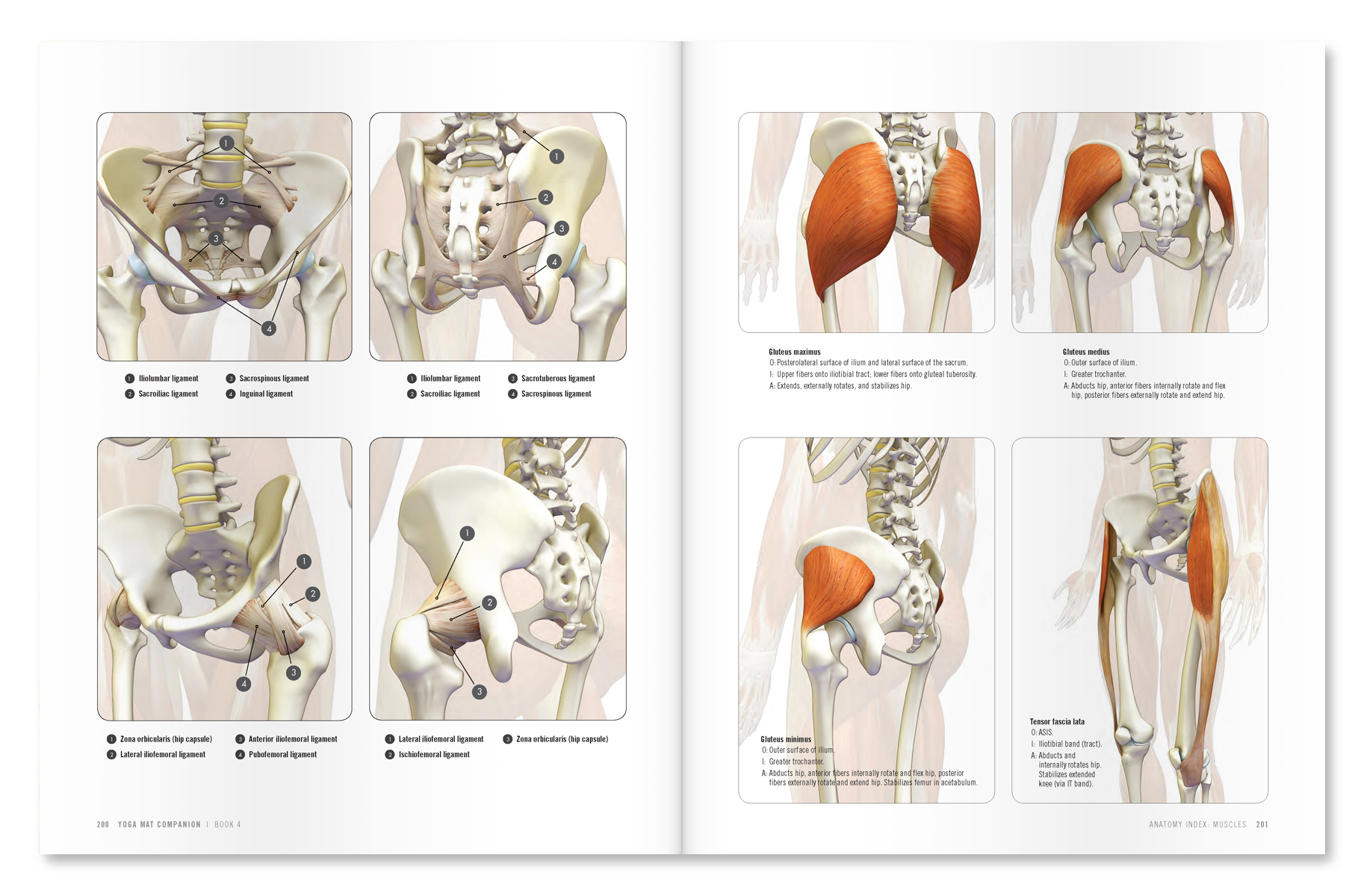 |
| An excerpt from "Yoga Mat Companion 4 - Anatomy for Arm Balances and Inversions". |
 |
| An excerpt from "Yoga Mat Companion 3 - Anatomy for Backbends and Twists". |
Hope you enjoy this overview of the foundational structures of the SI joint. I’d also like to say to our friends in Florida that I'll be teaching in beautiful Tampa/St Pete on the weekend of September 23--25. This is a special intensive in which I will be presenting the most recent research on stretching biomechanics and physiology in a manner that you can apply to your actual practice. Not to be missed! This intensive is the only course I'll be teaching in the Southeast USA this year--hope to see you there! Click here for more information from Suncoast Yoga Teachers Association…
All the Best,
Ray Long, MD
